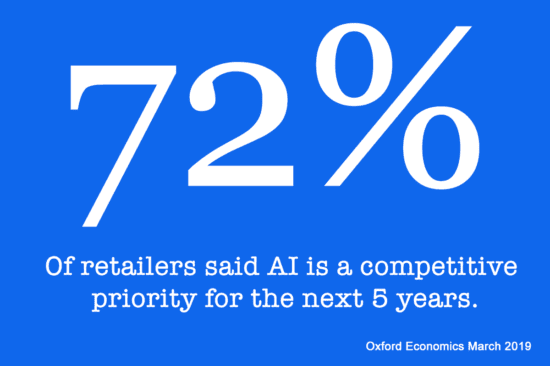Retailers in the UK are still using online merchandising techniques from the last century to try and compete and, in the process, making their jobs and survival much harder
Here’s the problem: UK retailers are under massive competitive and economic pressure. Stores are closing and thousands of jobs are under threat. Online behemoths like Amazon, powered by innovative service delivery and technologies, are steamrolling all in their path.
Yet retailers in the UK are still using online merchandising techniques from the last century to try and compete and, in the process, making their jobs and survival much harder.
Find out how AI-powered applications can deliver solutions to the business challenges and opportunities in online merchandising with our report 'Making the case for AI in online merchandising', written with Apptus.
The product exposure challenge
Let me explain. Product display and merchandising should ensure that the right product is in the right place at the right time for the shopper to buy. Simple.
It’s not unlike in-store visual merchandising and product and category management combined. In both cases, the goal is to maximize sales based on consumer preferences and current products and promotions.
The classic approach to managing product exposure online is to use experience, gut instinct and historical data. This is fine if you have a combination of limited products and finite space, but many sales will come from the long tail. How then, can a team of people merchandise 10,000 products with varying options to thousands of visitors? It’s impossible.
The response to this challenge is a combination of a ‘one size fits all’ approach and merchandising rules such as ‘show them what other people bought’ or ‘don’t display the black with the blue’. It’s hard work and most products languish in the virtual stockroom never to be displayed.

What’s more, many systems deal with just one part of a site – search or recommendations or ads or navigation. This means retailers can have up to four systems in effect cannibalizing promotions from each other as they each run using independent logic and data sets.
For example, a shopper sets out looking for a specific product, they find it but those pesky rules recommend a lower margin alternative. In effect, this is the antithesis of merchandising - directing willing buyers away from high-value purchases to lower margin alternatives. Madness.
AI - Doing the heavy lifting
However, a number of solutions now make use of AI predictive analytics and machine learning to decide which products get displayed where, when and to whom. Automatically.
The use of AI is widespread in marketing automation, manufacturing, warehousing and finance - to great, and transformative, effect. Yet despite stellar results elsewhere, the uptake in product exposure is remarkably slow. It is confined to major global retailers and Amazon itself, which generates 35% of its revenue from AI-powered recommendations alone.
The merchandising Luddites
The reason for the yawning chasm between what is possible and what is still being done is the concern that the ‘computer’ will commit some dreadful fashion faux pas such as displaying the blue bomber jacket next to the little black dress.
Yet there is always a reason for the computer’s decision and that decision will be based on what business goals have been set. Those goals are always financial, such as conversion, profit or volume, rather than the personal taste of a merchandising team.
So, the merchandising Luddites stagger on like a boxer who should have thrown the towel in two rounds ago, with inevitable results.
Ignorance stifling bliss
Maybe I am being too hard on some of those retailers.
Many online stores are run the same way as their brick and mortar counterparts, as I have already alluded to. The maxim “retail is detail” requires, by definition, a hands-on approach. If that’s the case, why on earth would you run the risk of letting a computer loose on such an important job?
The reluctance is understandable, up to a point. The question now is, how long retailers are prepared to rinse and repeat the mistakes of the past before grasping the transformative benefits that AI and machine learning can bring.
What’s more, retailers know that AI and machine learning hold promise: In a report by Oxford Economics last month, 72% of retailers surveyed described AI as a “competitive necessity” in the next five years. Some 55% of all retailers surveyed - not just Early Adopters - report a substantial increase in revenue growth as a result of AI investments. But those investments, to date, are focussed on non-merchandising related activities such as Robotic Process Automation.
Very often, though, the reason for ignoring what is possible is a lack of knowledge about what it involves.
I’m pleased to say the Smart Insights report Making the case for AI in online merchandising - Why AI must cross the chasm from digital marketing to trading teams explains the differences between traditional and AI-based merchandising, explores the benefits of machine learning and reviews the organizational changes that are needed.
Andrew Fowler is Country Manager for
Apptus UK. Since starting the role in 2012, he has become well-known amongst UK e-commerce professionals as an evangelist for Machine Learning and AI dramatically improving the way online merchandising is done. Andrew has helped major fashion and multi-category retailers in the UK improve sales, conversion, and profitability across their online properties. Prior to joining Apptus, Andrew spent a decade in various roles involving e-commerce solutions and consultancy.







